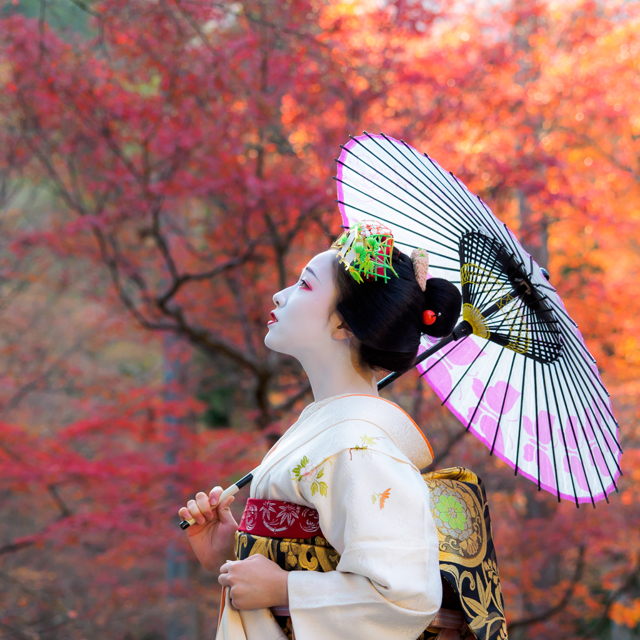
First days of December are always exciting within hanamachi. Although it’s slowly getting colder, maiko and geiko get into festive mood regardless. The very first week of the month is exclusively dedicated for kabuki—special “Kaomise/顔見世総見” review is held at Kyoto Minami-za Theatre. It’s, for sure, the highlight of the whole winter season. Kabuki plays during Kaomise gather the finest actors, celebrities, and guests—including geiko and maiko who get seated at the collateral galleries inside Minami-za. The theatre itself is decorated with wooden maneki boards on the facade that create a peculiar program of current performances, as the maneki are decorated with the actors’ names respectively. This year, however, Minami-za is going under seismic-protective construction, so Kaomise was moved to the ROHM Theatre of Kyoto. The maneki plates still can be found at the new location, as many Kyoto-natives cannot imagine the wintertime without a sight of these wooden tabs.
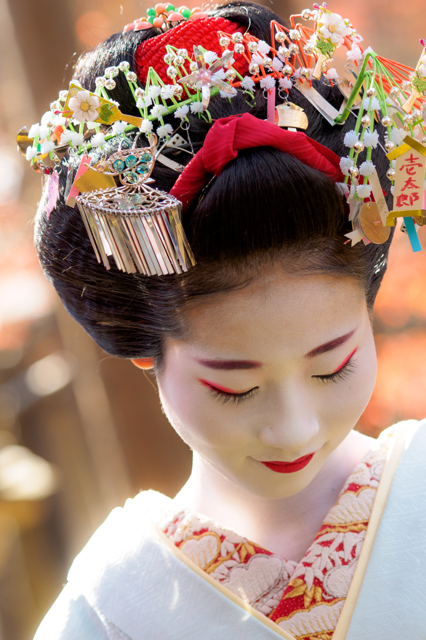
Kabuki actors are divided into two fractions in general. Kamigata actors come from Kansai region (which includes Kyoto), and Edo actors are the ones who perform in Tokyo (Kanto region). Majority of the actors chosen for Kaomise belong to the Kamigata section—the event itself can be compared to the Olympics or championships, as Kamigata (home team) and Edo actors present their individual kabuki programs that noticeably differ in style overall. In result, the whole idea behind Kaomise is to create a collective stage (Touzai Kongo) for the most prominent kabuki names from both regions and promote their art. Kaomise is not exclusive for Kyoto though; similar performances are held at Tokyo’s Kabuki-za and Nagoya’s Misono-za theatres. But the review at Minami-za is the most famous one—and Kyoto geisha contributed to its fame subconsciously.

This kabuki festival lasts until 26th of December (this year, due to the different location, it ends at December 18th), but maiko and geiko make official visits at the theatre mostly during the first week of the month. Each hanamachi takes over Minami-za only for one day, accordingly to a schedule. Ladies wear their most outstanding and expensive kimono—usually the ones that are hand-painted or made with a shibori technique. This kind of fabric is distinctive due to its tiny tie-dye dots that happen to be produced by tying a textile with small threads. Shibori (and all of the silk kimono worn by geisha) is entirely hand-crafted which makes these patterns incredibly pricey—and suitable for chic and celebratory events in December.

Dressed in shibori, snow-, or pine-themed kimono, maiko embellish their hairstyles with fancy maneki kanzashi. The tags glued to their hair ornaments are made of paper purposely. After long hours of Kaomise Soken, maiko go backstage to greet their favourite actors and get the paper maneki signed—actors who play male roles sign the maneki with black ink, while onnagata (female role actors) leave their trace with red lipstick. Two paper maneki boards is a standard (maiko choose one male and one female role actor), but girls who are huge fans of kabuki can install even up to seven different tags in their hair. As kabuki actors are also frequent guests of Kyoto teahouses, maiko tend to emphasize their friendship by wearing the maneki signed by their closest kabuki friends and customers. In case of the most popular maiko, two pieces of paper are sometimes not enough.
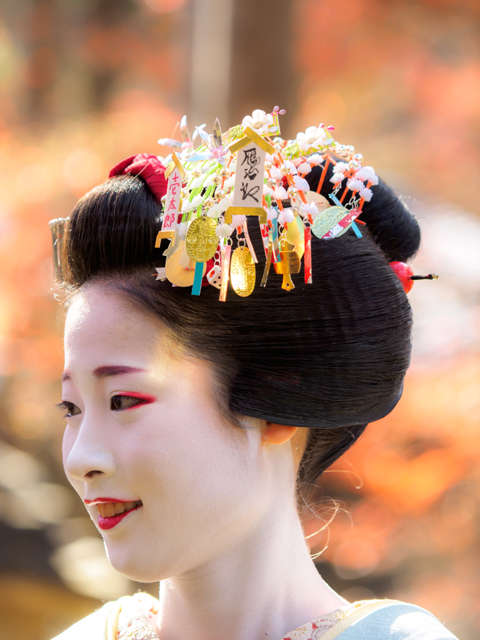
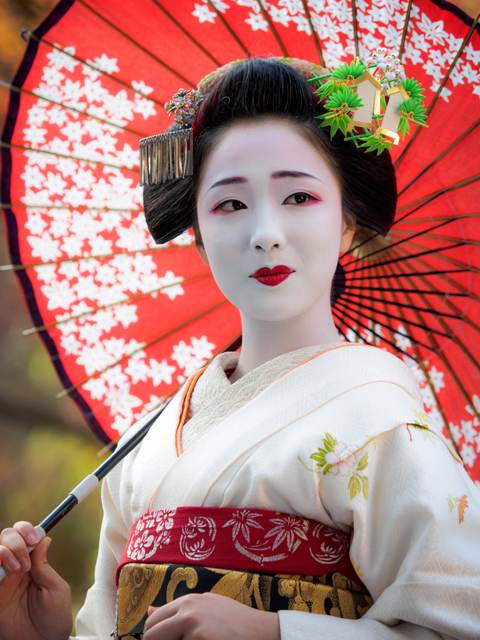
Once the maneki kanzashi are signed, maiko and geiko start a season of pre-Christmas parties at the teahouses around Kyoto hanamachi. On December 13th they reserve a day for a placid celebration of upcoming New Year—it’s the date of Kotohajime (事始め). All geisha head to see their dance masters and associated ochaya, shops, and patrons to exchange greetings. Maiko and geiko in Gion Kobu visit Inoue Yachiyo’s house. They receive brand new fans for dance practice (these fans are fully white or red, unlike the gold ones used for performances in front of the audience) and gift Yachiyo rice cakes (kagami mochi 鏡餅), as a gesture of thanks, in return.
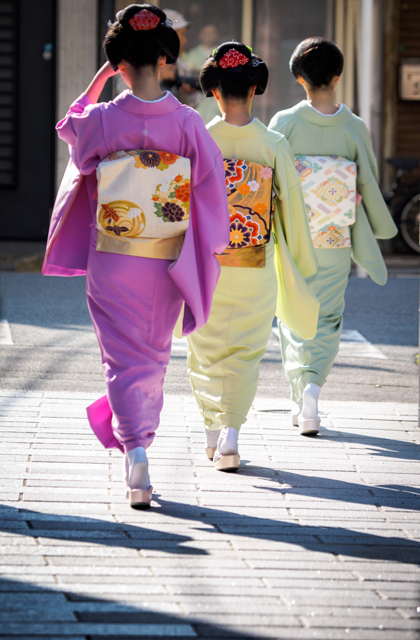
Hanamachi ladies wear simple, yet super elegant kimono for Kotohajime. The garments vary from cute komon kimono, pastel iromuji (in districts other than Gion Kobu, Kotohajime is usually celebrated with crested, plain-colored kimono), and subtle Edo komon. White stage makeup is unnecessary for such basic outfits—neither is katsura (such attire is called sonnari). An essential accessory is used though, as winter temperatures in Kyoto are quite low—maiko and geiko tend to cover their casual attire with big, warm shawls.
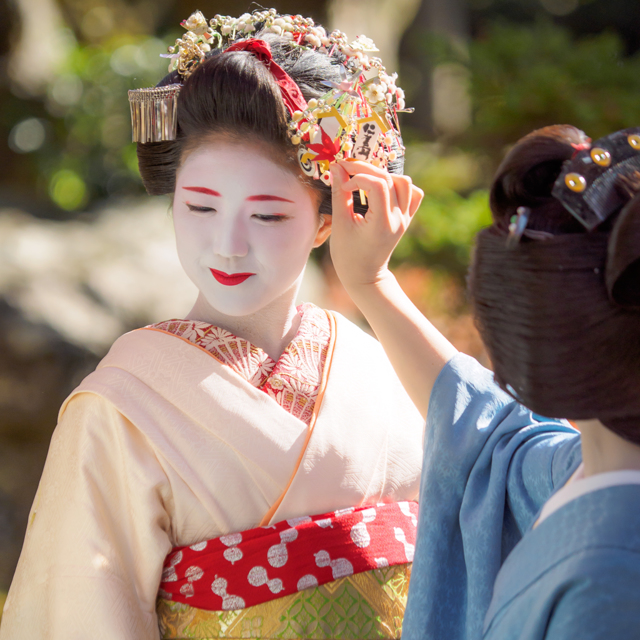
After Kotohajime, hanamachi indulge in Christmas celebrations. Although Christmas doesn’t belong to Japanese array of traditions, it’s now a typical festivity even at old-school teahouses. Guests enjoy a setting of Christmas tree, Santa’s hats, neon lights, and reindeers. The customs get mixed, after all. Hanamachi locals exchange little gifts sealed in pink-and-white fukudama. Eventually, after watching fireworks on the very last day of the year, they will lit a rope at the Yasaka Shine (okerabi おけら火tradition) and eat ozoni meal (containing mochi dipped in miso-based soup) to start the brand new year auspiciously.
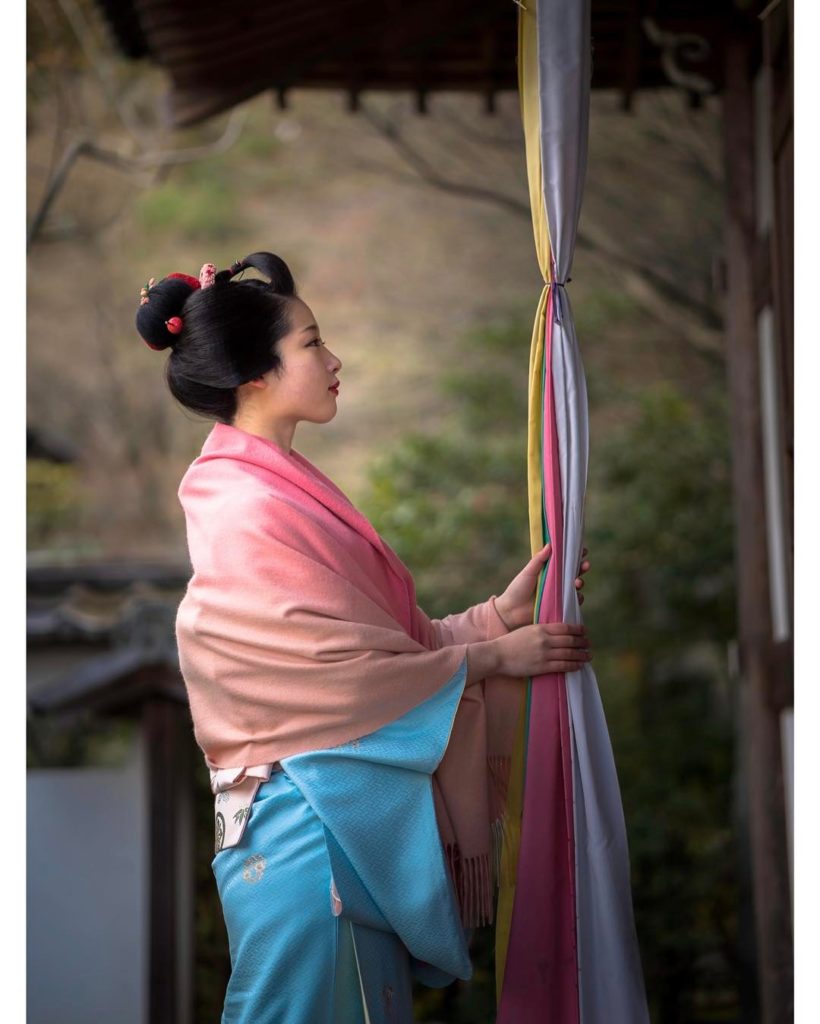
All photographs in courtesy of Gaap san:
